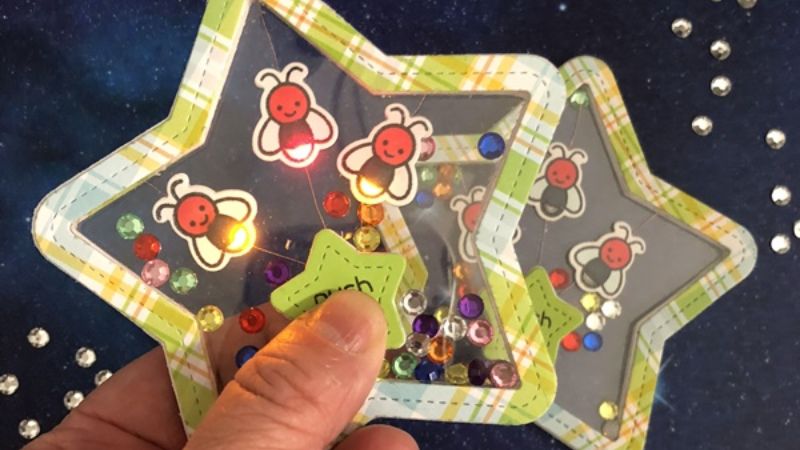Blog
How to Make a Toy Light Up: A Step-by-Step Guide
Lighting up a toy can transform it into something truly magical, whether it’s for enhancing a child’s play experience or creating a unique, glowing display. This article provides a step-by-step guide on how to make a toy light up, using simple and accessible materials, while maintaining safety. Glowali.xyz will cover everything from selecting the right lighting components to assembling the parts for a functional, fun, and eye-catching result.
Why Light Up a Toy?
Before diving into the “how”, let’s talk about why lighting up toys is so appealing:
- Enhanced Aesthetics: A glowing effect can make toys look cooler and more attractive, whether it’s an action figure, plush toy, or model car.
- Educational Value: For children, adding lights to toys is a great way to learn about basic electronics and circuitry.
- Personalization: Lighting up a toy is an excellent way to customize it, making it unique to you or your child.
Tools and Materials Needed
Here’s a list of basic materials and tools that you’ll need. Each project may require slight modifications, but these essentials will cover most light-up toy projects.
LED Lights
- Types: LEDs come in various shapes, sizes, and colors. Choose according to your toy’s size and design.
- Color: Think about what color would look best for your project. White is versatile, but red, blue, or multicolored LEDs can add extra fun.
- Voltage: Ensure the LED lights match your power source.
Power Source
- Battery Type: Button cells, AAA, or AA batteries are common choices. The battery type depends on the LED power requirement and space available inside the toy.
- Battery Holder: A small battery holder is needed to keep your battery secure.
Wires
Thin, flexible wires are necessary for connecting the LED lights to the battery pack. Make sure to select wires that match the power requirements and space constraints.
Resistors (if needed)
Depending on your LED type, you may need resistors to prevent the LEDs from burning out. A common resistor value is 220 ohms.
Switch
A small toggle switch or button is useful for controlling when the toy lights up. This will prevent the battery from draining when the toy is not in use.
Tools
- Soldering Iron and Solder: For a more permanent and durable connection.
- Electrical Tape: To secure connections if you’re avoiding soldering.
- Hot Glue Gun: Useful for attaching components inside the toy.
- Small Screwdriver: To open battery compartments or remove screws on toys.
- Wire Strippers: For preparing wires.
How to Make a Toy Light Up
Step 1: Plan Your Project
First, decide where you want the lights to appear on the toy. This could be the eyes of an action figure, the wheels of a toy car, or the inside of a plush toy.
- Consider Size and Placement: Think about where the LEDs, switch, and battery pack will fit inside the toy.
- Select the LED Color and Number: Determine how many lights you need and what colors will work best.
Step 2: Prepare the LED and Power Components
- Connect the LED to the Battery: Test your LED by connecting it to the battery pack. Be sure to connect the positive (longer leg) of the LED to the positive end of the battery and the negative to the negative end.
- Add a Resistor if Necessary: If you’re using a powerful battery source, add a resistor to avoid burning out the LED.
Step 3: Open the Toy (If Needed)
Carefully open the toy, either by unscrewing sections or using a hobby knife. Make sure you keep track of all parts so you can reassemble them.
- For Plush Toys: Open a seam carefully, so you can stitch it back later.
- For Plastic or Hard Toys: Identify areas where you can safely add holes or slots for lights and wiring.
Step 4: Insert LED Lights
Place the LEDs in the designated spots. Secure them with a small amount of hot glue or electrical tape if needed.
- For Glowing Eyes: If placing LEDs in an action figure or stuffed animal’s eyes, position them carefully so they look natural.
- For Vehicle Lights: Place the LEDs in the front or rear where headlights or taillights would be located.
Step 5: Connect the Battery and Switch
- Install the Battery Pack: Place the battery pack in a secure area within the toy, ensuring it’s accessible for future replacements.
- Attach the Switch: Position the switch where it can be easily accessed. Wire the switch between the battery and LED light, allowing you to control when the lights turn on or off.
Step 6: Test the Circuit
Once all components are in place, turn on the switch to test your circuit. The lights should glow as planned.
Troubleshooting Tips: If the lights don’t work, double-check all connections, ensuring that the LED polarity matches the battery.
Step 7: Secure All Components
After testing, make sure everything is securely placed:
- Wrap Wires: Use electrical tape to insulate exposed wires to prevent short circuits.
- Glue Components: Apply hot glue to hold the battery pack and switch in place.
Step 8: Reassemble the Toy
Reattach all parts or sew up seams if working with a plush toy. Ensure everything fits comfortably without straining wires or other components.
Additional Tips and Ideas
- Use Diffused LEDs: These LEDs give a softer, more even glow, ideal for a pleasant lighting effect.
- Remote-Controlled Lights: For an advanced touch, consider remote-controlled LEDs, which can be turned on or off with a button.
- Different Light Patterns: Some LED kits allow for blinking or color-changing effects, adding even more appeal to your light-up toy.
Safety Tips
When making a toy light up, safety is paramount, especially if it’s for a child:
- Battery Safety: Ensure the battery compartment is secure to prevent choking hazards. Small batteries should not be easily accessible to children.
- Avoid Overheating: Check that the LED does not overheat, especially in toys with fabric.
- Use Non-Toxic Materials: For plush toys, make sure to use non-toxic glue and avoid materials that may emit fumes or be unsafe for children.
DIY Light-Up Toy Ideas
Here are some fun ideas to try:
- Light-Up Plush Toys: Add a soft, warm glow to the eyes or other parts.
- Action Figures with Glowing Eyes: Insert tiny LEDs in the eye sockets to make action figures more realistic.
- Toy Cars with LED Headlights: Place LEDs in the headlights of toy cars for a cool, realistic effect.
- Stuffed Animals with Color-Changing Lights: Use RGB LEDs to add a color-changing feature inside plush toys, creating a magical effect.
Troubleshooting Common Issues
- LED Not Lighting Up: Check the battery connection and polarity of the LED.
- LED Flickering: Loose wiring or poor connections can cause flickering; try re-securing connections.
- Battery Drains Quickly: A high-powered LED or a constantly running light can drain batteries. Consider adding a switch or using energy-efficient LEDs.
Conclusion
Lighting up a toy can be a fun DIY project that brings joy to both kids and adults. Whether you’re adding headlights to a toy car or creating a glowing effect in a stuffed animal, this guide covers everything you need to know to make a toy light up safely and effectively.

